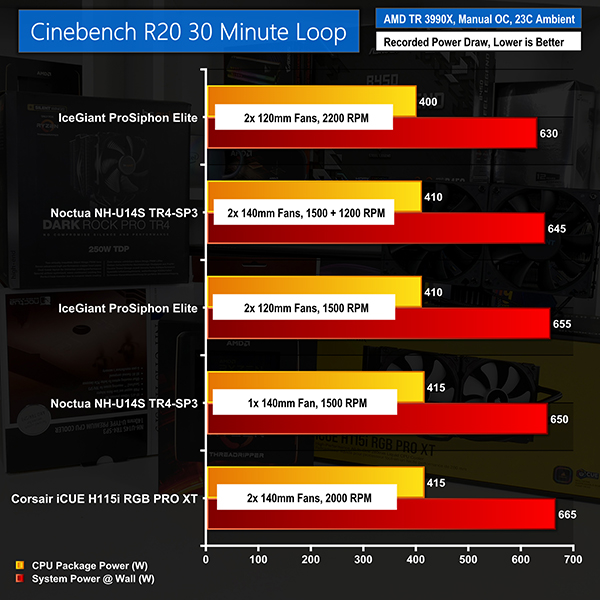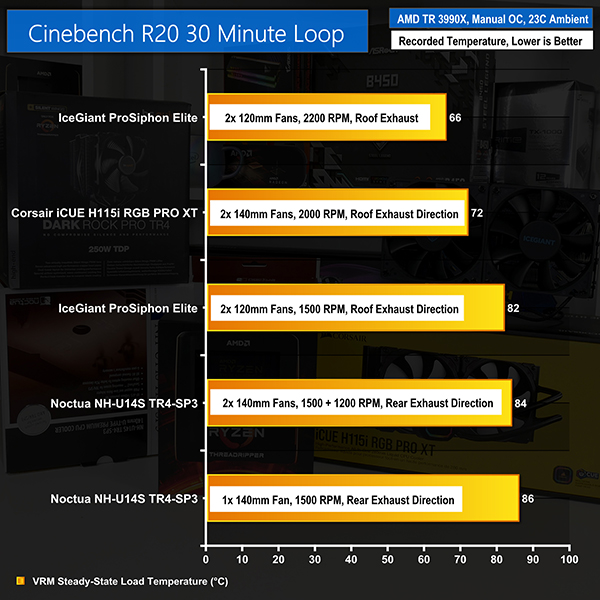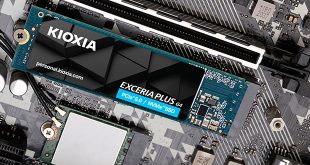In this power draw test, lower is better. That is because the fixed-frequency CPU overclock should, in theory, run at the same power draw across all CPU coolers.
In reality, that is not the case as some CPU coolers are better than others. The coolers that allow for lower CPU temperature should help to reduce power consumption at the fixed frequency as there is less leakage.
Yet again, the IceGiant ProSiphon Elite with its 2200 RPM fans tops the chart thanks to its leading cooling performance.
Noctua’s single- and dual-fan U14S, as well as the speed reduced ProSiphon Elite, are next in the hierarchy. These coolers run at around 410-415W each and their system-wide power delivery numbers is just about close enough to be called even (as the system power draw is not a static reading and it bounces frequently).
Corsair comes in bottom position with the 280mm AIO that does not cover the entire Threadripper heatspreader. CPU package power draw was reported at 415W, but the system-wide power draw is notably higher at 665W.
This implies that inefficiency losses are present in the system (perhaps at the VRM level) as the CPU is simply running so hot. Powering the high-speed fans, pump, and RGB lighting also adds a little power draw to the Corsair numbers.
Once again, we see that this level of heavy thermal load is the ideal battleground for the IceGiant ProSiphon Elite CPU cooler when using high speed fans on its dense fin array. Noctua also puts in an excellent showing with its lower speed, quieter fans.
As was the case with the PBO testing, VRM temperatures are influenced by CPU cooler airflow direction. This time, however, the power delivery through the VRM is close across the board and is therefore more directly comparable than with the PBO test.
IceGiant’s full speed configuration fairs best as its airflow orientation is ideal for our motherboard. Plus, it required a little less power to be delivered by virtue of its chart-topping CPU cooling performance.
Corsair’s AIO is next in terms of performance. Corsair overcomes its higher CPU and system-wide power draw and delivers strong VRM cooling. Again, this is due to the optimal airflow direction in our test system.
Somewhat surprising is how close the speed reduced IceGiant configuration’s performance is to the Noctua option. The ProSiphon Elite and its optimal airflow direction for VRM cooling registers 82C VRM temperature while the Noctua configurations are 84C and 86C. All three of these lower fan speed configurations are perfectly capable from a VRM cooling perspective.
 KitGuru KitGuru.net – Tech News | Hardware News | Hardware Reviews | IOS | Mobile | Gaming | Graphics Cards
KitGuru KitGuru.net – Tech News | Hardware News | Hardware Reviews | IOS | Mobile | Gaming | Graphics Cards




